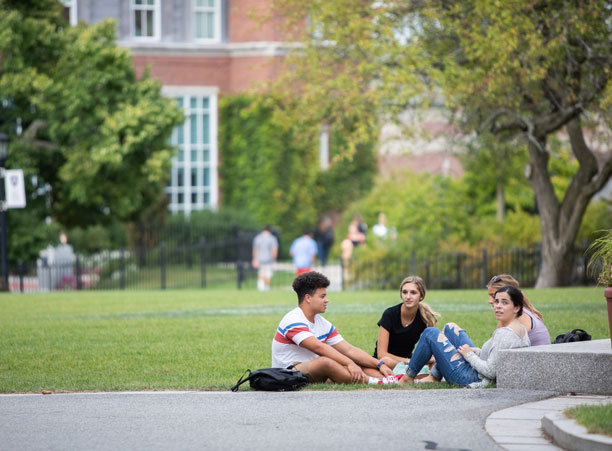
Twelve years ago, Holy Cross set an ambitious goal: to be completely carbon neutral by 2040. Thanks to a comprehensive set of initiatives and policy changes, the College is nearly halfway there.
According to the latest data, Holy Cross reduced its carbon emissions by 46.8 percent between 2007 and 2017. Reducing carbon emissions is an important effort towards fighting global climate change. Leading scientific organizations around the world agree that the earth's climate is warming, and that "rigorous scientific research demonstrates that the greenhouse gases emitted by human activities are the primary driver."
"Pope Francis in Laudato Si and Father Arturo Sosa, S.J., Superior General of the Society of Jesus have emphasized that care for our common home has to be a priority for the Catholic Church, the Jesuits and all of us who work together supporting our shared mission," said Fr. Philip L. Boroughs, S.J. President of the College. "We must safeguard the earth and its beauty for the survival of future generations and human flourishing and our students are modeling for us how to become engaged.”
The effects of the College's Carbon Neutral Plan can be seen across campus:
- A green building policy calls for all major construction and renovation projects — including the College's newest projects, the Luth Athletic Complex, the Joyce Contemplative Center, the upcoming Joanne Chouinard-Luth Recreation and Wellness Center and the performing arts center — to comply with LEED certification requirements.
- Lighting across campus is being replaced with high-efficiency LED bulbs and motion sensors.
- This fall, thanks to a grant from the Massachusetts Department of Environmental Protection and a rebate from National Grid, the College installed electric vehicle charging stations in the parking garage.
- Dining Services has made a host of changes to improve sustainability, including going “trayless" in the main Kimball Dining Hall. This means about 25 to 50 percent less food is wasted, and up to a half gallon of water is saved per tray not washed, saving 900 gallons of water a day.
These are just some of the current initiatives driving down the College's carbon emissions.
The effort towards reducing carbon emissions began in 2007 with the formation of the Presidential Task Force on the Environment, and it continues today. Fr. Boroughs recently announced that College administrators would soon be meeting with members of the student environmental concerns organization Eco-Action to work towards creating a new staff position to support the College's sustainability program.